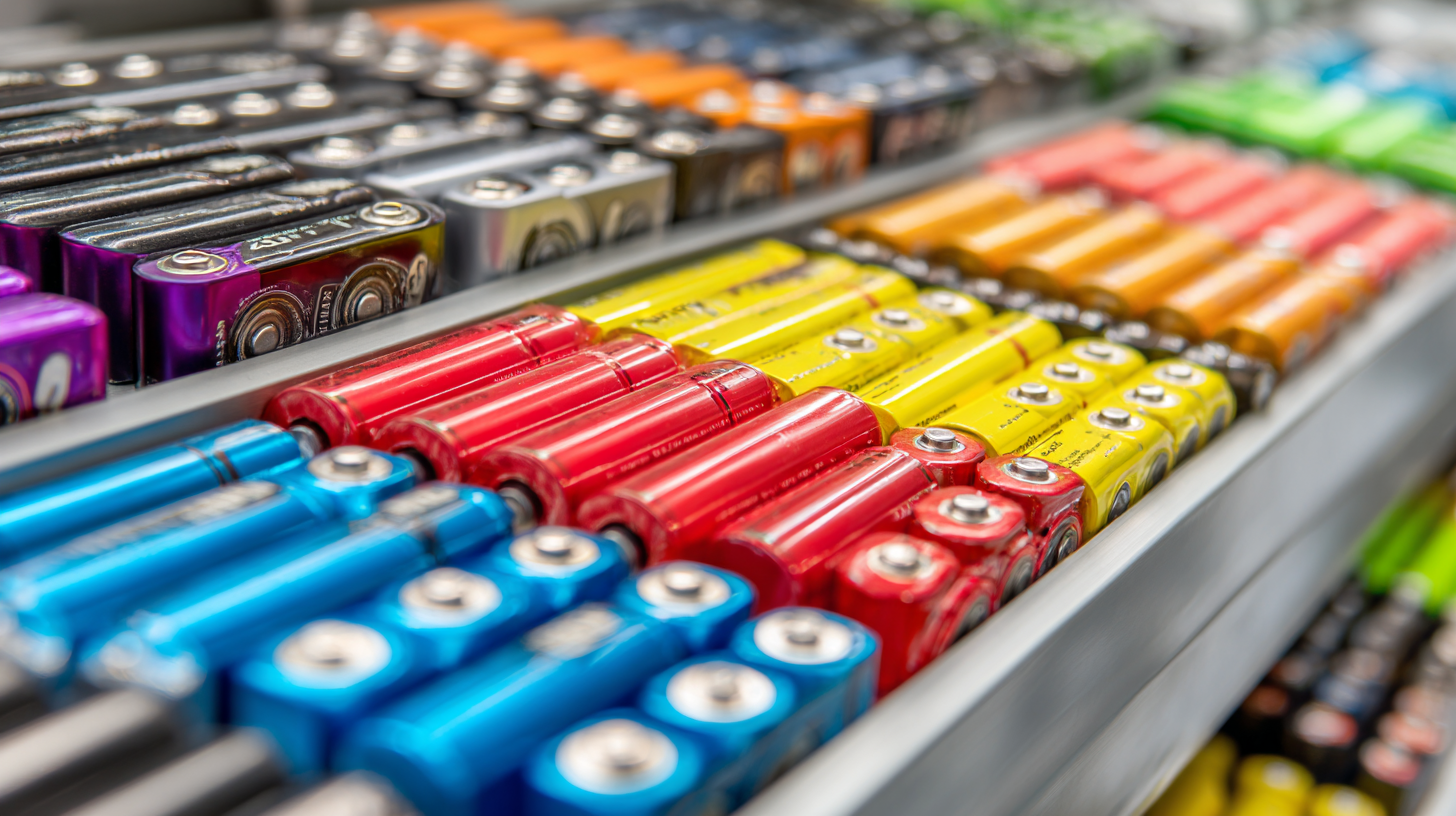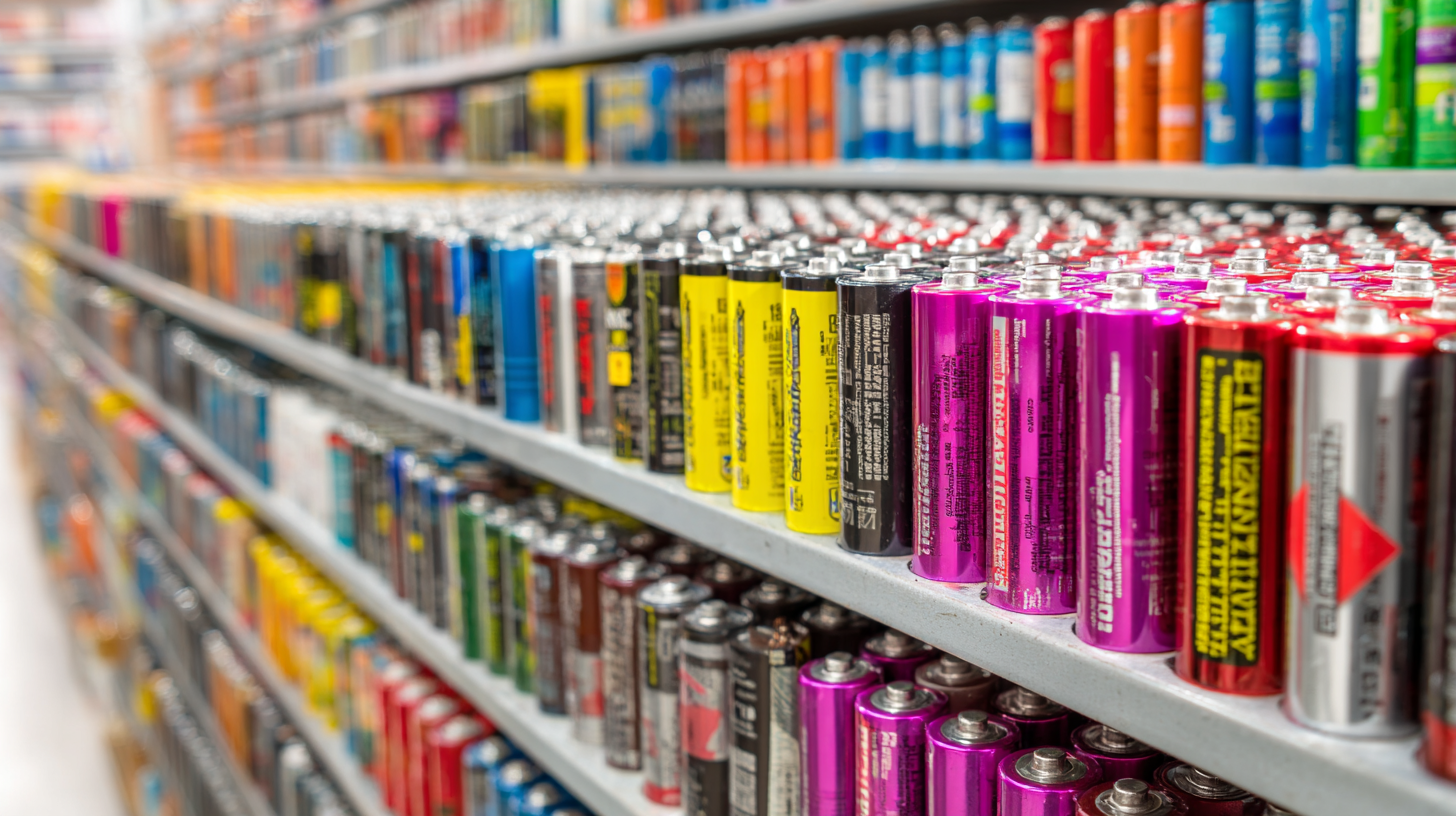Navigating Issues with Bulk AA Battery Supply Chains in Global Markets
As the demand for bulk AA batteries continues to rise, particularly in sectors such as consumer electronics and renewable energy storage, navigating the complexities of their supply chains has never been more critical. According to a recent report by MarketsandMarkets, the global battery market is projected to reach USD 167 billion by 2025, with AA battery consumption significantly contributing to this growth. However, challenges such as raw material shortages, geopolitical tensions, and fluctuating production costs threaten to disrupt the steady supply of bulk AA batteries. Industry stakeholders must remain vigilant and adaptable to these issues to ensure an uninterrupted flow of products that meet the escalating global demand. As we delve into this blog, we will explore the key factors influencing bulk AA battery supply chains and discuss strategies for overcoming potential obstacles in this evolving market landscape.

Challenges in Sourcing Bulk AA Batteries: Key Market Insights and Data
Sourcing bulk AA batteries is increasingly challenging in today's global markets due to various factors such as supply chain disruptions, rising raw material costs, and fluctuating demand. Manufacturers and retailers need to be acutely aware of these dynamics to effectively manage their inventory and maintain competitive pricing. Additionally, geopolitical tensions and shifts in trade policies can further complicate procurement processes, necessitating a proactive approach to sourcing strategies.
**Tip: Diversify Your Suppliers**
One effective strategy for navigating these challenges is to diversify your supplier base. Relying on a single source can expose your business to significant risks, especially in times of market volatility. By establishing relationships with multiple suppliers across different regions, you can mitigate risks related to shortages and price increases.
Another important consideration is to keep an eye on industry trends and consumer behavior. As the demand for electronic devices continues to surge, understanding seasonal trends and innovations in battery technology can guide your purchasing decisions.
**Tip: Monitor Inventory Levels Closely**
Regularly monitoring your inventory levels will allow you to anticipate shortages and adjust your sourcing strategy accordingly. Implement just-in-time inventory practices to minimize costs while ensuring you have the necessary stock to meet customer demand.
Impact of Global Trade Policies on AA Battery Supply Chains
The landscape of AA battery supply chains is increasingly influenced by global trade policies, which can have profound effects on production and distribution. Tariffs imposed on imported materials and finished products challenge manufacturers to balance cost efficiency and quality. For instance, mandates for local sourcing can compel companies to adjust their supply strategies, potentially leading to increased production costs. This creates a ripple effect that can drive up prices for consumers while simultaneously forcing manufacturers to seek innovative solutions to minimize expenses.

Additionally, trade agreements play a critical role in shaping the competitive landscape of the battery market. Favorable policies can facilitate smoother access to foreign markets and reduce barriers for companies looking to expand their operations internationally. Conversely, trade restrictions can isolate markets, causing disruptions in supply lines and complicating the procurement of essential raw materials. As companies navigate these complexities, they must remain agile, continuously adapting to the ever-changing geopolitical environment to sustain a reliable and responsive supply chain.
Emerging Markets and Their Influence on AA Battery Availability and Pricing
Emerging markets are greatly influencing the availability and pricing of AA batteries, as they represent a rapidly growing segment of the global consumer electronics market. According to a report by Research and Markets, the global AA battery market is expected to reach $25 billion by 2025, with a significant portion of this growth attributed to rising demand in Asia-Pacific regions. Countries such as India and Indonesia are experiencing increased penetration of electronic devices, driving the need for reliable battery supplies.
However, challenges within the supply chain, including raw material shortages and logistic bottlenecks, could impact pricing and distribution. The lithium-ion battery market, which often intersects with AA battery production, faced a 20% price increase in the past year due to supply chain disruptions, as noted in a report by BloombergNEF. Consequently, manufacturers relying on these components must navigate fluctuating costs and ensure sustainable sourcing practices to maintain competitive pricing in emerging markets. With strong economic growth prospects in these regions, the AA battery industry must adapt to the evolving landscape to meet consumer demands effectively.
Navigating Issues with Bulk AA Battery Supply Chains in Global Markets
| Region | Average Price per Bulk Shipment ($) | Supply Chain Disruptions (Days) | Market Demand (Million Units) | Local Production Capacity (Million Units) |
|---|---|---|---|---|
| North America | $20,000 | 5 | 120 | 80 |
| Europe | $22,000 | 7 | 150 | 90 |
| Asia | $15,000 | 10 | 200 | 150 |
| Latin America | $18,000 | 8 | 60 | 30 |
| Africa | $25,000 | 12 | 40 | 15 |
Sustainability Concerns in Bulk AA Battery Production and Supply
The surge in popularity of AA batteries in various consumer electronics has drawn attention to the sustainability concerns surrounding their production and supply chain. The environmental impact of extracting raw materials, coupled with the energy-intensive processes involved in battery manufacturing, raises pressing questions about the sustainability practices of companies in this sector. As businesses navigate these challenges, it is crucial to seek avenues for reducing carbon footprints and enhancing resource efficiency.

Furthermore, firms can implement more efficient logistics solutions that reduce transportation emissions. Exploring local sourcing options and optimizing supply routes can significantly decrease the carbon impact associated with battery distribution. Establishing partnerships for shared transportation resources can also drive more sustainable practices across the supply chain. Adopting these measures will position companies favorably within global markets that are increasingly focused on sustainability.
Technological Innovations Shaping the Future of AA Battery Supply Chains
Technological innovations are revolutionizing the AA battery supply chain, addressing longstanding challenges and enhancing efficiency. Advanced manufacturing techniques, such as automation and robotics, are streamlining production processes, thereby reducing costs and minimizing human error. Furthermore, the advent of smart batteries equipped with IoT technology allows for real-time monitoring, improving performance and lifetime management. These innovations promise to create a more robust and reliable battery supply chain that can adapt to fluctuating market demands.
Tip: Invest in emerging technologies to stay competitive. By incorporating automation and IoT solutions, businesses can not only improve production efficiency but also gain valuable insights into operational performance.
Moreover, sustainability has become a focal point in battery production, driving the development of eco-friendly materials and recycling programs. Companies are increasingly adopting greener practices, which not only comply with regulatory standards but also resonate with environmentally conscious consumers. This shift is crucial for maintaining market relevance and fostering customer loyalty.
Tip: Embrace sustainable practices as a market differentiator. Engaging in eco-friendly initiatives can enhance brand image and open up new revenue streams through recycled materials and sustainable energy solutions.
Navigating Issues with Bulk AA Battery Supply Chains
This chart illustrates the major factors affecting the supply chains for AA batteries, highlighting the impact of technological innovations on production efficiency, transportation logistics, and market demand.
